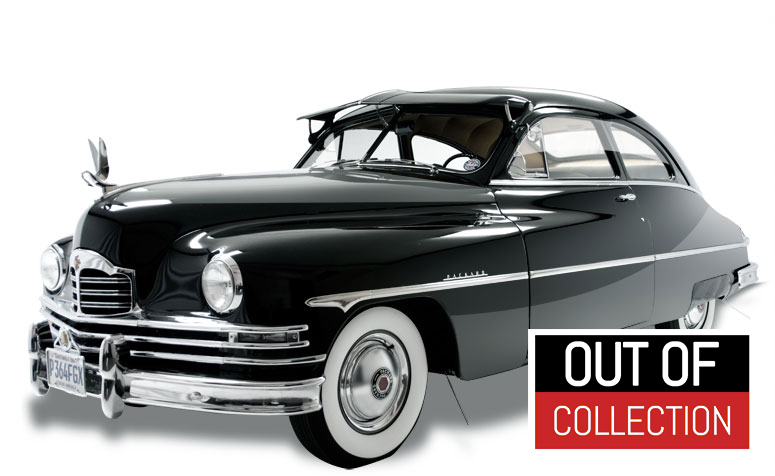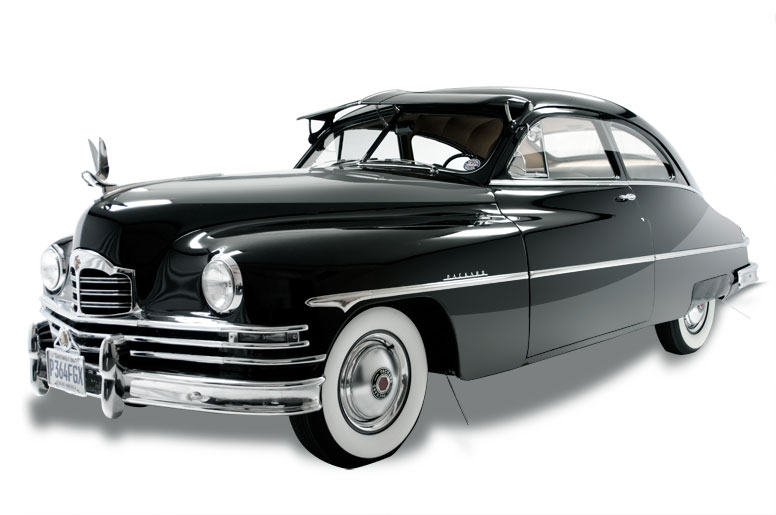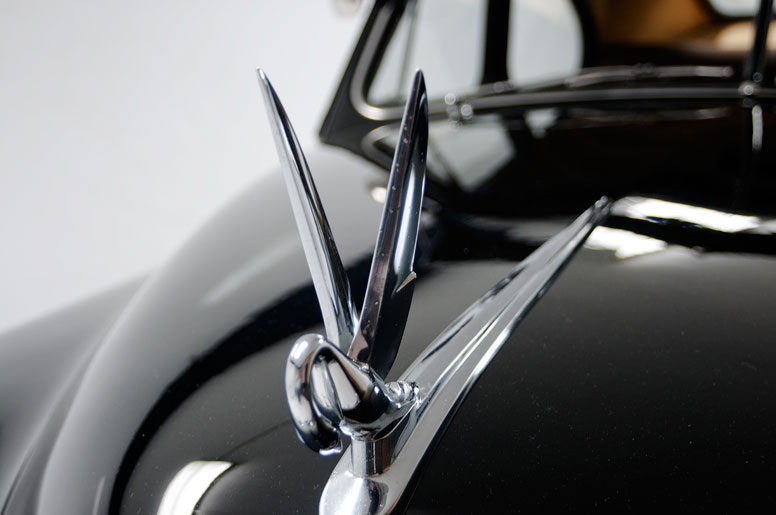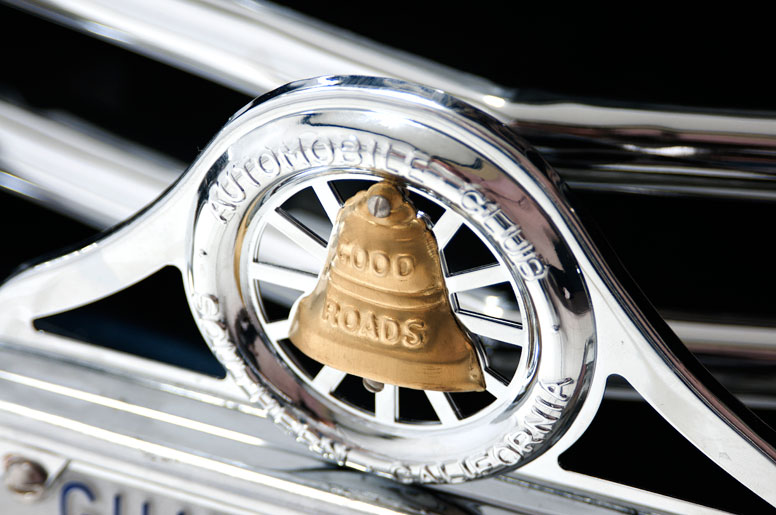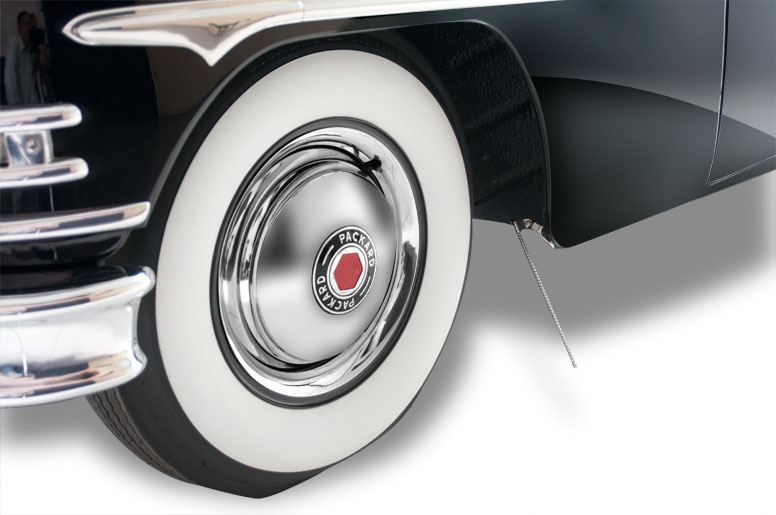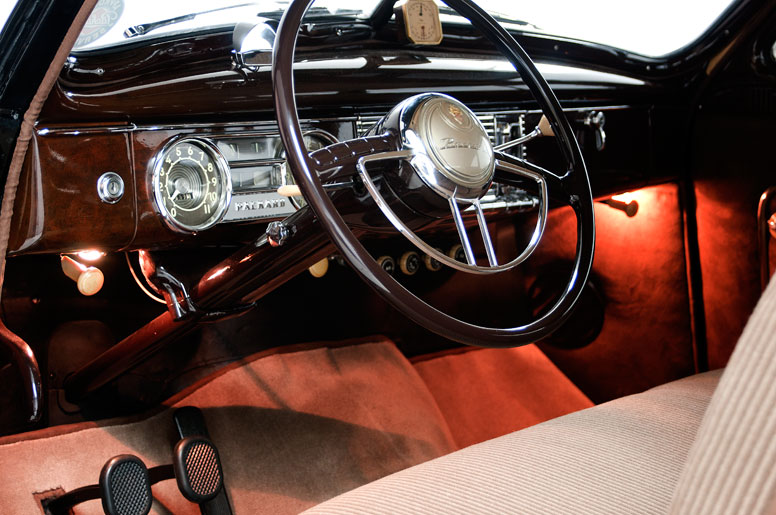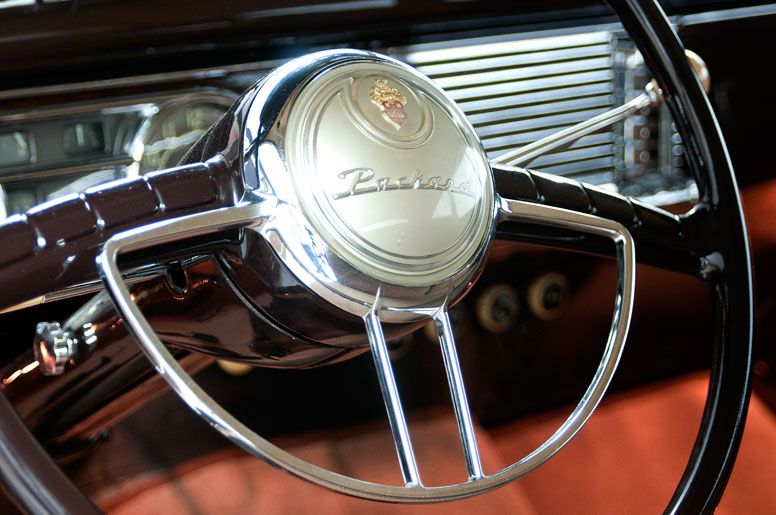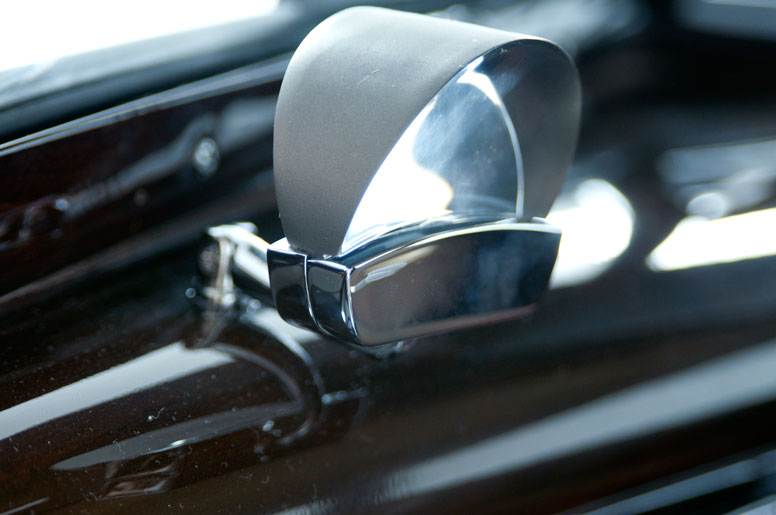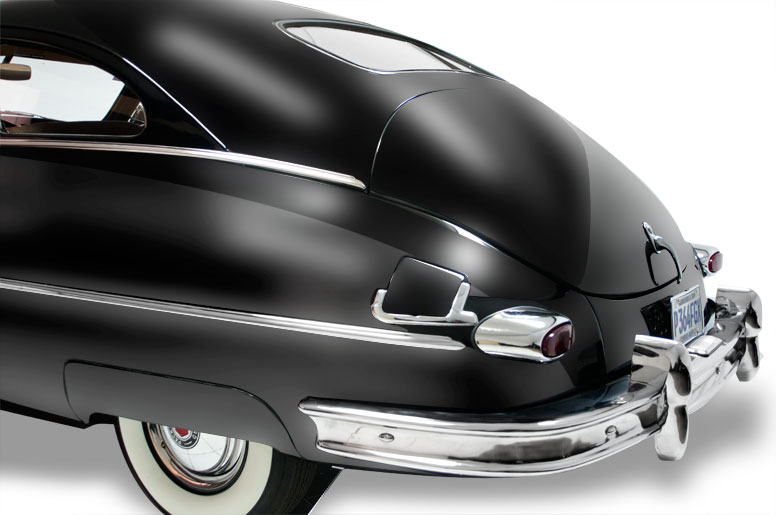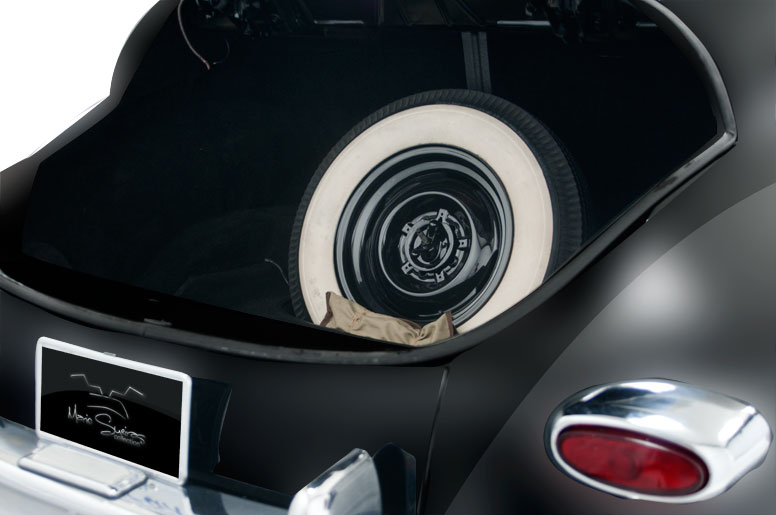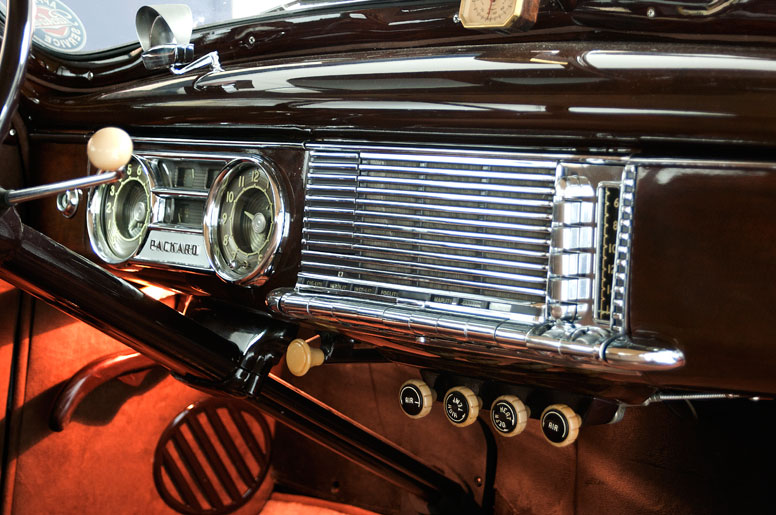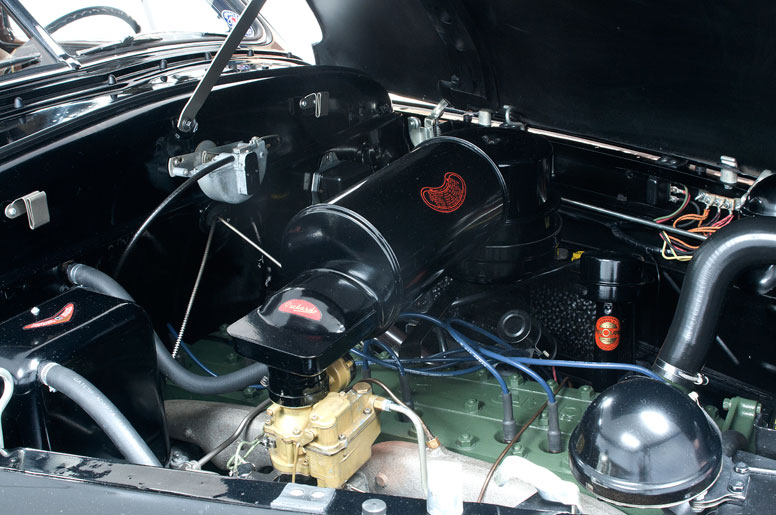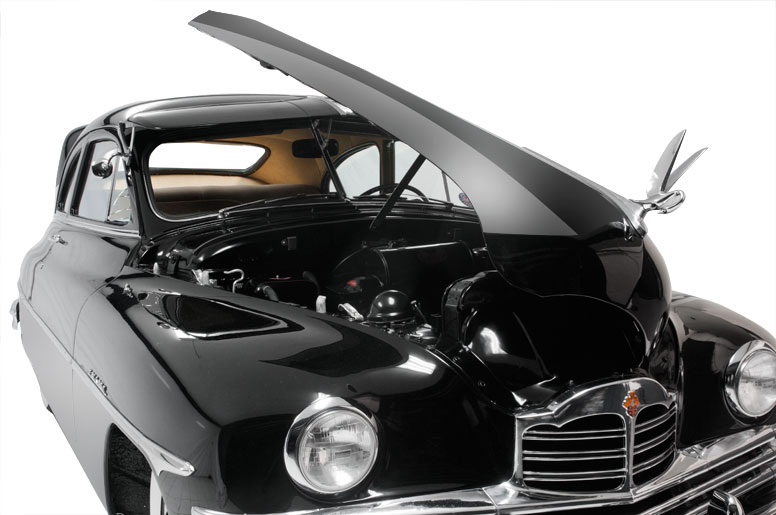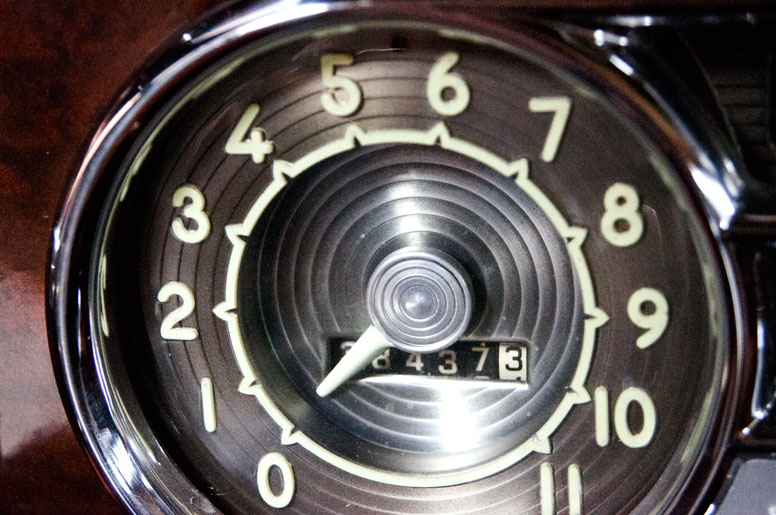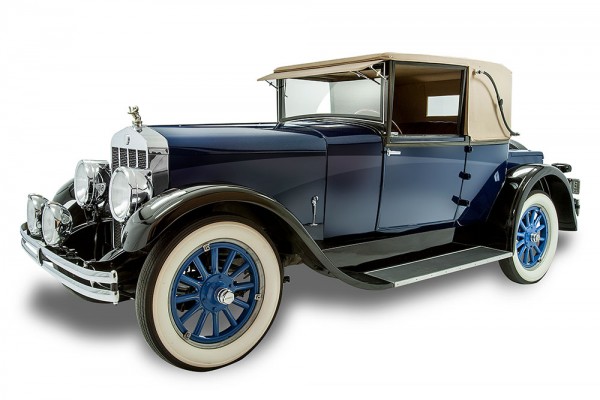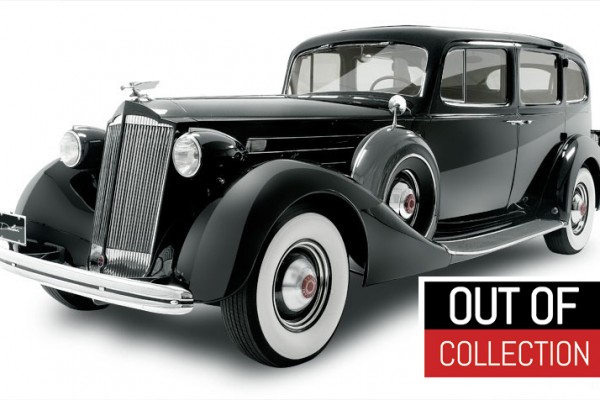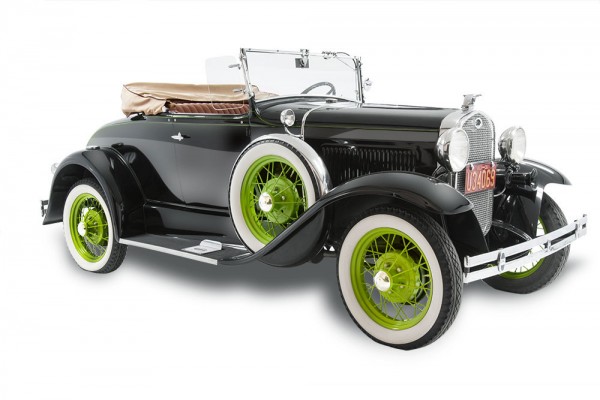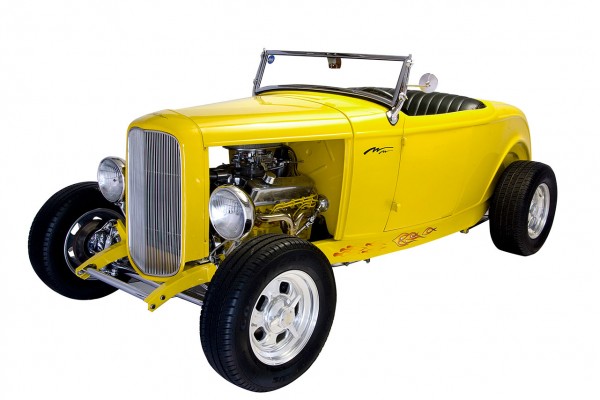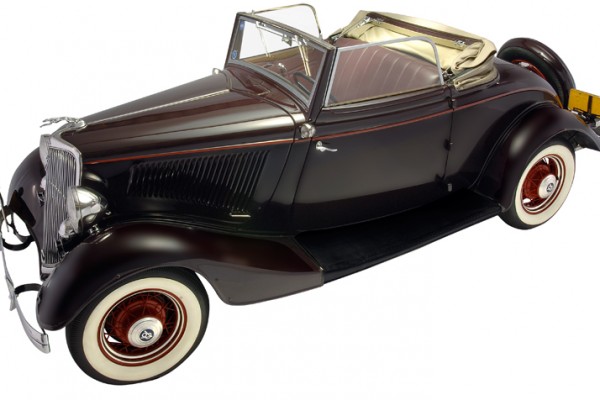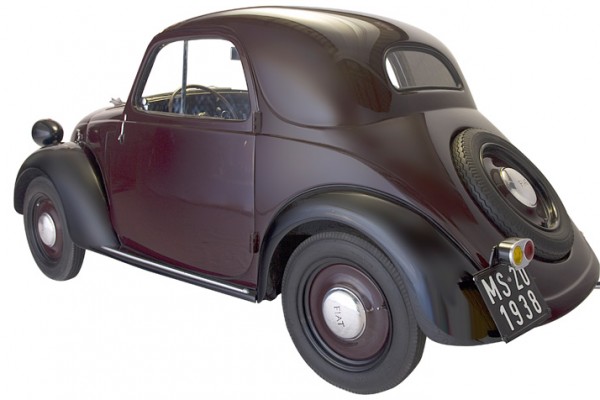Packard abandoned the luxury car market, relinquishing the market to Cadillac. Although the Custom Clippers and Custom Eights were built in its old tradition with craftsmanship and the best materials, Cadillac now set the “Standard of the World”, with bold styling and tailfins. Cadillac was among the earliest U.S. makers to offer an automatic transmission (the Hydramatic in 1941), but Packard caught up with the Ultramatic,[17] offered on top models in 1949 and all models from 1950 onward. Packard outsold Cadillac until about 1950; the problem was that most sales were the mid range lines, the volume models.
A buyer of a Super Eight paying premium dollars did not enjoy seeing a lesser automobile with nearly all the Super Eight’s features, with just slight distinction in exterior styling. In addition to standard sedans, coupes, and convertibles, Packard also produced the curious “Station Sedan”, a wagon-like body that was mostly steel, but had a little structural and a good deal of decorative wood in the back. Only 3864 were sold over its three years of production.
Also in mid-1949, Packard introduced its Ultramatic automatic transmission, the only independent automaker to develop one. Although smoother than the GM Hydramatic, acceleration was sluggish and owners were often tempted to put it into Low Gear for faster starts which put extra wear on the transmission.
In 1950, sales tanked as the company moved only 42,000 cars for the model year. When Packard’s president George T. Christopher announced that the “bathtub” would get another facelift for 1951, influential parts of the management revolted. Christopher was forced to resign and loyal Packard treasurer Hugh Ferry became president.

